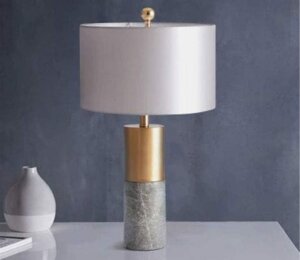In the world of home décor, few accessories combine form and function as effortlessly as a table lamp. Whether placed beside a sofa, on a console table, or in a cozy reading nook, a table lamp not only provides essential illumination but also adds depth, character, and personality to your living space. But choosing the ideal table lamp is more than just picking out a pretty piece—it requires thoughtful consideration of your room’s layout, style, lighting needs, and overall ambiance.
This guide will walk you through the essential factors to consider when selecting a table lamp that complements your living room while fulfilling both decorative and practical purposes.
1. Understand the Purpose of the Lamp
Before diving into aesthetics, it’s important to determine why you need the table lamp. Is it for task lighting (like reading or working)? Ambient lighting to create a soft glow in the evening? Or primarily for decorative purposes?
Types of Lighting:
-
Ambient Lighting: Provides overall light for a cozy, welcoming atmosphere.
-
Task Lighting: Focused light for activities like reading, knitting, or writing.
-
Accent Lighting: Highlights specific areas or objects, adding drama and visual interest.
Understanding the primary function of your lamp will help you narrow down the appropriate size, brightness, and design features.
2. Match the Lamp Height to the Furniture
Height matters when choosing a table lamp. A lamp that’s too tall or too short can affect both functionality and aesthetics.
Ideal Lamp Height Tips:
-
When placed next to a sofa or chair, the bottom of the lampshade should be at about eye level when seated.
-
For a side table or end table, the combined height of the table and lamp should be approximately 58–64 inches from the floor.
This ensures the light source is neither glaring into your eyes nor too low to be effective.
3. Choose the Right Lampshade Style and Size

The lampshade greatly influences how light is cast in your living space. It also adds to the visual appeal of the lamp.
Consider the Following:
-
Shape: Drum, empire, square, or tapered—each offers a different aesthetic. Drum shades are modern, while tapered shades lend a classic feel.
-
Size: The shade should be about two-thirds the height of the lamp base and twice the width.
-
Material: Fabric shades diffuse light softly, while glass or metal shades provide more direct illumination.
Also, consider the color and texture of the shade. Lighter shades allow more light to pass through, while darker shades offer a more dramatic, moody glow.
4. Coordinate with Your Decor Style
Your table lamp should complement the existing style of your living room, whether modern, traditional, industrial, or eclectic.
Lamp Styles by Decor Type:
-
Modern/Minimalist: Clean lines, neutral colors, and simple geometric shapes.
-
Traditional: Ornate bases, warm tones, and pleated or tapered shades.
-
Rustic/Farmhouse: Wooden or distressed metal finishes, natural fabrics.
-
Industrial: Exposed bulbs, black iron or copper finishes.
-
Bohemian: Patterned shades, colorful bases, or artisan-crafted designs.
Matching your lamp to the overall décor will create a cohesive and intentional design narrative.
5. Consider the Base Design and Material
The base of a table lamp often acts as the focal point, so its design and material should suit both your taste and the lamp’s intended function.
Popular Base Materials:
-
Ceramic: Versatile and available in various colors, patterns, and glazes.
-
Metal: Sleek, modern, and great for contemporary spaces.
-
Glass: Offers elegance and lightness—ideal for formal or bright interiors.
-
Wood: Brings warmth and texture, perfect for rustic or Scandinavian themes.
In small spaces, opt for a slender or transparent base to keep the room feeling open. In larger rooms, bold or sculptural bases can serve as standout pieces.
6. Don’t Forget the Bulb and Wattage
The type of bulb and its brightness play a critical role in how the lamp performs. Choose a bulb that suits the lamp’s function:
-
Task Lighting: 40–60 watts or LED equivalent (800–1000 lumens).
-
Ambient Lighting: 25–40 watts or LED equivalent (450–800 lumens).
-
Smart Bulbs: Offer dimming and color adjustment via smartphone or voice control.
Consider using warm white bulbs (2700K–3000K) for a cozy, welcoming glow in your living space.
7. Layer the Lighting
While a table lamp is essential, it should be part of a layered lighting scheme that includes ceiling fixtures, floor lamps, and accent lights.
Styling Tip:
Place table lamps at varying heights throughout the room to create depth and avoid flat, one-dimensional lighting. For example, balance a floor lamp in one corner with a table lamp on a side table opposite it.
8. Pay Attention to Placement
The position of your lamp can impact both the light distribution and the visual balance of the room.
Placement Suggestions:
-
On side tables or end tables near seating areas for reading or relaxing.
-
On a console or credenza to add height and symmetry in entryways or behind sofas.
-
On nested tables or in a reading nook to create a focused, cozy corner.
Ensure the lamp cord is tucked neatly or concealed to maintain a clean look.
Conclusion
Choosing the ideal table lamp for your living space involves a blend of aesthetic sense and functional awareness. By considering the lamp’s purpose, scale, style, and placement, you can find a piece that enhances both the look and comfort of your room.
Whether you’re adding a touch of elegance with a glass base, infusing rustic charm with a wooden finish, or making a bold statement with a sculptural design, the right table lamp can elevate your entire living space. So take your time, explore your options, and let your lighting be a reflection of your personal style.




